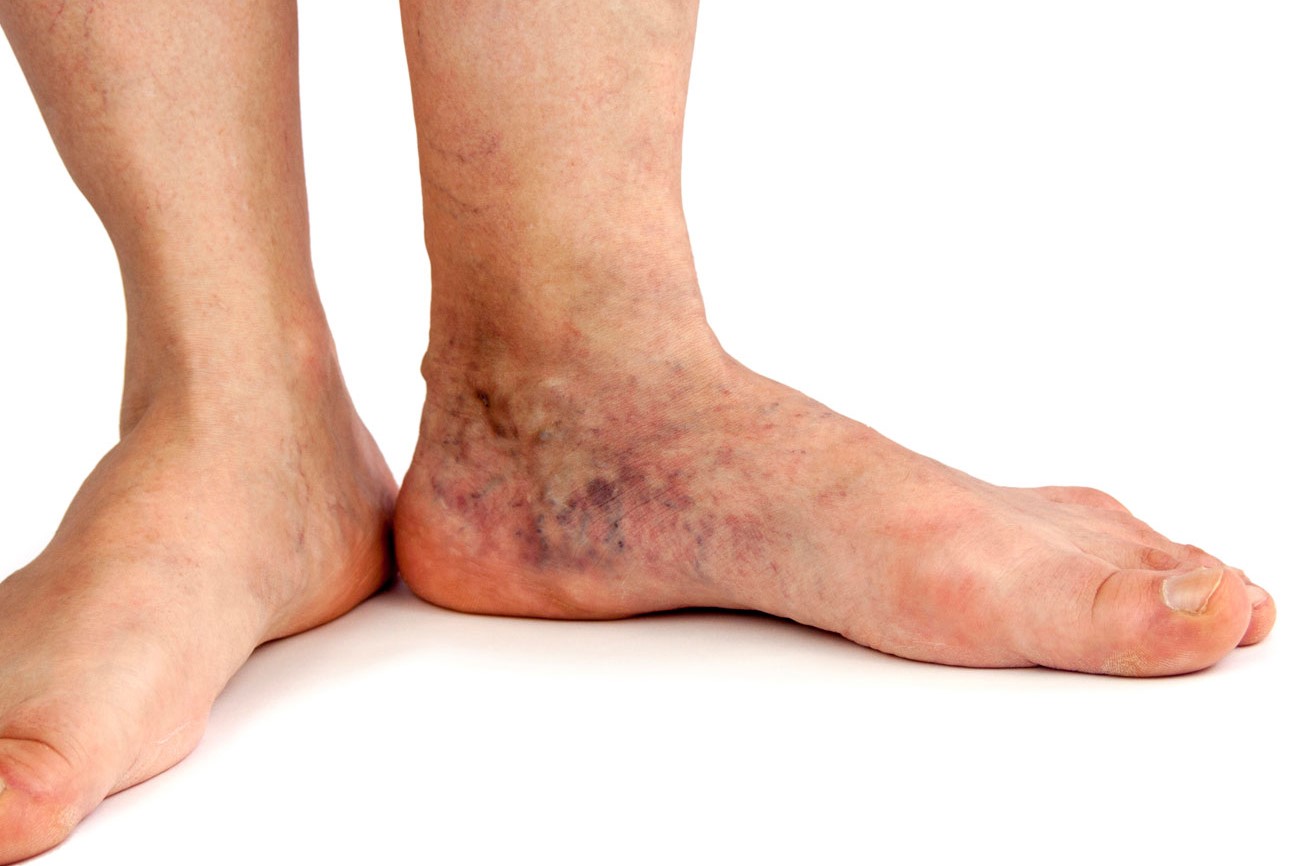
Chronic Venous Insufficiency: symptoms, treatment and prevention
Chronic Venous Insufficiency (CVI) is a disorder characterised by difficult venous return to the heart. CVI can be divided into two major groups, depending on the prevailing cause: Organic IVC – caused by real alterations to the veins – and functional IVC, due to overactive veins that, although normal and not diseased in the traditional sense of the term, are forced to overwork
Chronic venous insufficiency is a significant condition both from an epidemiological point of view and in terms of its economic and social consequences: it is estimated that approximately 30% of the Italian female population and 15% of the male population are affected to varying degrees.
Causes of chronic venous insufficiency
Chronic venous insufficiency is caused by circulatory problems: venous blood – which should return to the heart from the ‘periphery’ of the body due to the elasticity of the venous wall – tends instead to stagnate in the veins of the legs.
Organic CVI is often caused by varicose veins (permanent dilatation of the vein wall), the formation of which is related to the number of pregnancies, use of oral contraceptives, water retention, overweight, chronic constipation, family history and type of work performed.
Functional IVC, on the other hand, is caused by overwork of the veins caused by incorrect posture, alterations in muscle pumping or lymphoedema.
Symptoms and diagnosis of chronic venous insufficiency
Chronic Venous Insufficiency manifests itself through symptoms in the lower limbs ranging from simple swelling to more severe alterations: heaviness in the legs, tingling, itching, burning, pain and night cramps, prominent capillaries, skin alterations, varicose veins, ulcerations.
These signs can occur at any time of the year, but are accentuated especially during the summer months.
The diagnosis is essentially clinical. In many cases, a precise diagnosis can be made with echocolordoppler, a harmless and painless examination that evaluates the morphology and function of the veins in the lower limbs.
Chronic Venous Insufficiency in its early stages is not a serious problem
However, it should not be neglected because the symptoms, initially mild, tend to worsen over time: blood stagnation leads to increased pressure in the veins and the disorder tends to worsen over time; it also promotes inflammation that can damage the cells in the vessel walls.
CVI can also promote complications such as phlebitis, thrombosis or ulceration and other disorders such as cellulitis and haemorrhoids.
The most feared complication is Deep Vein Thrombosis (DVT).
Treatment of chronic venous insufficiency
The treatment of Chronic Venous Insufficiency depends on the cause.
If caused by varices, their removal or sclerosis is sufficient, with healing and complete disappearance of symptoms.
In cases of deep circulation problems, special elastic stockings are prescribed instead.
Medications serve mainly to diminish the extent of the discomfort, but are generally not decisive for the cause.
For functional VCI – caused by a postural deficit or lymphoedema – in addition to elastic stockings and medication, a haemodynamic phlebological footplate should be prescribed, which is intended to promote muscle pumping.
Physiotherapy and massage may also be helpful.
Chronic venous insufficiency: how to prevent it?
Prevention of IVC is very important, especially in predisposing conditions (family history, long periods of standing, pregnancy) and to slow down the progression of the disease.
Here are some tips
- use elastic stockings, a very important tool for the prevention and treatment of all venous diseases;
- avoid standing still for long periods of time;
- stand up frequently on your toes (this exercise stimulates the calf muscle pump, pushing up the blood);
- walk as long as possible;
- sleep with the lower limbs raised about 15 centimetres, lifting the bed from the foot end with a wooden plinth or a pillow under the mattress;
- avoid direct heat on the legs (heat dilates and thus increases venous stasis);
- use comfortable shoes with a 2-3 centimetre heel and a wide sole, avoiding slippers and clogs;
- correct posture and gait if necessary with the help of an orthopaedic arch support;
- avoid tobacco and coffee, substances that have a vasoconstricting effect on the arteries.
Read Also:
Emergency Live Even More…Live: Download The New Free App Of Your Newspaper For IOS And Android
Venous Thrombosis: From Symptoms To New Drugs
COVID-19, The Mechanism Of Arterial Thrombus Formation Discovered: The Study
The Incidence Of Deep Vein Thrombosis (DVT) In Patients With MIDLINE
Deep Vein Thrombosis Of The Upper Limbs: How To Deal With A Patient With Paget-Schroetter Syndrome
Knowing Thrombosis To Intervene On The Blood Clot
Venous Thrombosis: What It Is, How To Treat It And How To Prevent It
Pulmonary Thromboembolism And Deep Vein Thrombosis: Symptoms And Signs
Summer Heat And Thrombosis: Risks And Prevention
Deep Vein Thrombosis: Causes, Symptoms And Treatment
Thrombus: Causes, Classification, Venous, Arterial And Systemic Thrombosis


